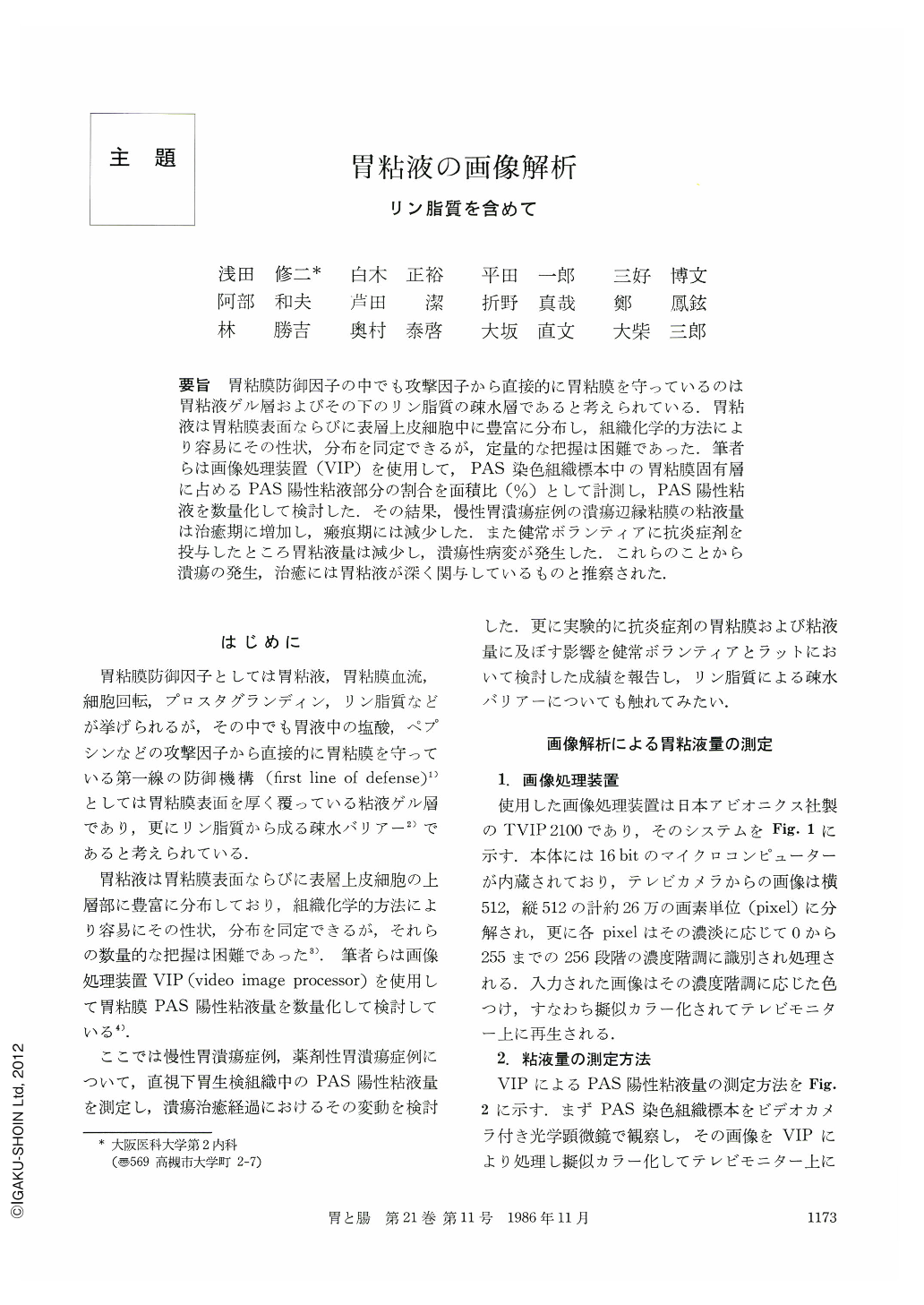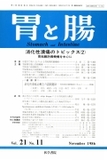Japanese
English
- 有料閲覧
- Abstract 文献概要
- 1ページ目 Look Inside
要旨 胃粘膜防御因子の中でも攻撃因子から直接的に胃粘膜を守っているのは胃粘液ゲル層およびその下のリン脂質の疎水層であると考えられている.胃粘液は胃粘膜表面ならびに表層上皮細胞中に豊富に分布し,組織化学的方法により容易にその性状,分布を同定できるが,定量的な把握は困難であった.筆者らは画像処理装置(VIP)を使用して,PAS染色組織標本中の胃粘膜固有層に占めるPAS陽性粘液部分の割合を面積比(%)として計測し,PAS陽性粘液を数量化して検討した.その結果,慢性胃潰瘍症例の潰瘍辺縁粘膜の粘液量は治癒期に増加し,瘢痕期には減少した.また健常ボランティアに抗炎症剤を投与したところ胃粘液量は減少し,潰瘍性病変が発生した.これらのことから潰瘍の発生,治癒には胃粘液が深く関与しているものと推察された.
Among various defensive factors of the gastric mucosa, the mucous gel and the hydrophobic barrier of phospholipids especially seem to play an important role in direct protection against aggressive factors. The gastric mucus is abundantly distributed throughout the gastric surface and in the surface mucosal cells. The characteristics and distribution of this mucus were easily identified using histochemical method. However, it was difficult to quantify it. We quantified the PAS positive mucus as the area ratio (%) of the mucous part and the mucosal layer, using VIP (Video Image Processor) (Fig. 1, 2). This method made it possible to evaluate the mucous quantity in the gastric mucosal layer (Fig. 12 a, b).
As a result, we found that the amount of mucus in the mucosa adjacent to ulcers increased at the healing stage and decreased at the scarring stage in patients with chronic gastric ulcers (Fig. 4, 5). Moreover, the administration of anti-inflammatory drugs caused a decrease of the amount of gastric mucus, resulting in gastric mucosal damage (Fig. 7 a, b, 8, 9).
Our data suggest that the amount of gastric mucus is closely related to the prevention of the development of ulcers and to their healing.

Copyright © 1986, Igaku-Shoin Ltd. All rights reserved.


